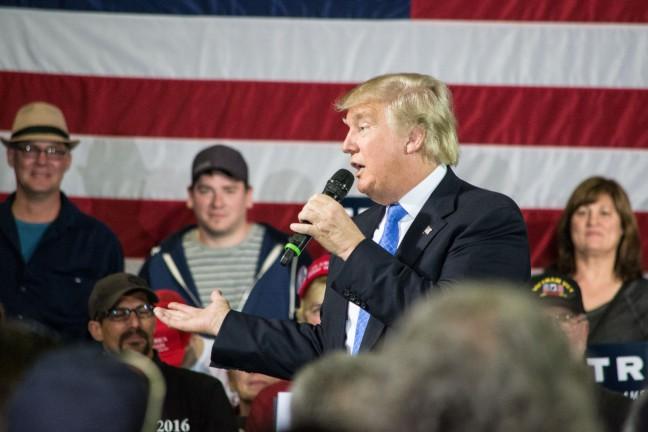Donald Trump will be America’s next president. I, like President Barack Obama and former Secretary of State Hillary Clinton, have accepted this fact. Now is the time to move from reacting to the outcome to finding the areas where Republicans and Democrats can come together. Protesting the outcome of this election is a waste of time and energy — we must move to using our voice to shape policy.
What better way to do this than examine Trump’s proposals for his first 100 days.
Released in late October, there are some truly awful proposals here and ultimately ones that can benefit the U.S. Here are the top three policies to be worried about and the top three to be optimistic about.
What to worry about:
The repeal of Obamacare.
Repealing the Affordable Care Act is definitely one of the worst things Trump and the Republicans will do. The ACA is far reaching and repealing it, without a replacement, would reinstate idiotic measures, such as cutting off people at age 18 (instead of 26) from their parents’ plan and would allow for insurers to discriminate against people with preexisting conditions.
I would think that neither of these things will happen if a replacement legislation is drafted, but reality is that many low-income individuals — those who make up to 400 percent of the official poverty level — could lose government subsidized insurance, returning us to the state our health system was pre-ACA.
Trump’s Middle Class Tax Relief and Simplification Act
Trump describes his tax plan as, “An economic plan designed to grow the economy four percent per year and create at least 25 million new jobs through massive tax reduction and simplification, in combination with trade reform, regulatory relief and lifting the restrictions on American energy. The largest tax reductions are for the middle class. A middle-class family with two children will get a 35 percent tax cut.”
It is true that reducing taxes can cause GDP to increase, but the amount of revenue lost, an estimated $9.5 trillion over the first decade of the tax decrease, would cause our deficit to increase greatly, forcing, as the nonpartisan Tax Policy Center says, “The significant marginal tax rate cuts would boost incentives to work, save and invest if interest rates do not change. The plan would also reduce some tax distortions in the allocation of capital. However, increased government borrowing would push up interest rates and crowd out private investment, offsetting some or all of the plan’s positive incentive effects.”
The Wall
Undoubtedly, the wall is a terrible move for the state of international politics. It is a signal to the rest of the world that America is inaccessible and we aren’t willing to be a partner in the global society. When the world’s largest economy basically says, “Fuck all of you, we’re out,” it’s not taken too kindly in the international community.
While all that is fairly disturbing, there are certain areas that I, a Clinton supporter, am completely in favor of.
A Constitutional Amendment to impose term limits on all members of Congress
This might just be a personal vendetta for me, but I do not understand why people want to or are even allowed to serve for as long as they want in Congress. We have insanely high numbers of reelection in the U.S. Ninety percent of House members and 91 percent of Senators get reelected. Getting fresh faces in Congress might help us create a more efficient, more willing to compromise government because there is a time limit for you to forward your agenda.
American Energy & Infrastructure Act
This legislation would, “Leverage public-private partnerships, and private investments through tax incentives, to spur $1 trillion in infrastructure investment over 10 years. It is revenue neutral.”
There is no doubt that America’s infrastructure is ridiculously terrible. In fact, the American Society for Civil Engineers gives the overall American infrastructure a grade of “D+” and reports that we need $3.6 trillion more in infrastructure spending by 2020 to fix our system. The most interesting part about Trump’s plan is its revenue neutrality, implying changes in the tax laws that result in no change in the amount of revenue coming into the government.
Affordable Childcare and Eldercare Act
This legislation “Allows Americans to deduct childcare and elder care from their taxes, incentivizes employers to provide on-side childcare services, and creates tax-free Dependent Care Savings Accounts for both young and elderly dependents, with matching contributions for low-income families.”
Healthcare costs are very dependent on age, with these costs rising exponentially after age 50. Additionally, the fastest growing segment for healthcare costs are for the zero to 18 aged cohort. These tax deductions help to ensure that the neediest Americans get health coverage.
While this is a limited view on what Trump will do in his four years, this should be an invitation to continue to foster conversation about Trump’s plans for America.
Aaron Reilly (areilly@badgerherald.com) is a sophomore majoring in social work and economics.


